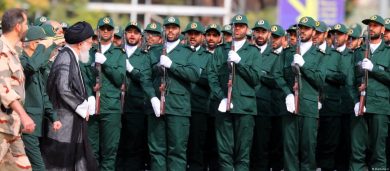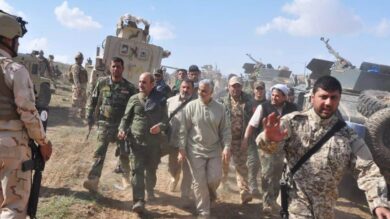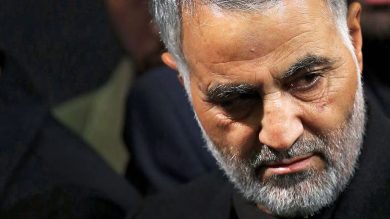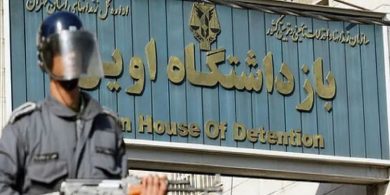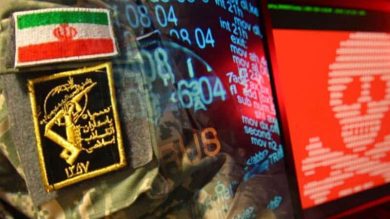The Islamic Revolutionary Guard Corps (IRGC) is not only a dominant military and economic force in Iran but also a central enforcer of the regime’s repressive policies. For decades, the IRGC has systematically targeted activists, dissidents, and ordinary citizens who dare to challenge the authoritarian rule of the Islamic Republic. From suppressing mass protests to imprisoning human rights advocates, the IRGC has established itself as the regime’s most feared instrument of control. This article delves into the IRGC’s crackdown on Iranian activism, examining its methods, the stories of those affected, and the broader implications for human rights and civil liberties in Iran.
The IRGC’s Role in Suppressing Activism
The IRGC was established in 1979 to safeguard the Islamic Revolution, a mandate that extends to suppressing any perceived threats to the regime. Over the years, it has expanded its authority, using its Basij militia and intelligence units to monitor and crush dissent. Activism in Iran—whether focused on women’s rights, labor rights, environmental issues, or political reform—is viewed by the IRGC as a direct challenge to the regime’s authority.
1. Targeting Protest Movements
Iran has witnessed numerous waves of protests in recent years, driven by economic hardship, political corruption, and social injustice. From the Green Movement in 2009 to the widespread demonstrations following the death of Mahsa Amini in 2022, the IRGC has played a central role in suppressing these uprisings. Protesters are met with excessive force, including live ammunition, tear gas, and mass arrests.
2. Monitoring and Surveillance
The IRGC operates an extensive surveillance network to track activists and dissidents. Through cyber monitoring, phone tapping, and informants, the IRGC identifies and targets those involved in organizing protests or expressing dissent online. Social media platforms have become key battlegrounds, with the IRGC cracking down on digital activism through censorship and arrests.
3. Controlling Universities and Civil Society
The IRGC heavily monitors universities, where student activism has historically been a powerful force for change. It also targets NGOs, charities, and cultural organizations, accusing them of being fronts for anti-regime activities.
From Streets to Cells: The Path of Repression
The IRGC’s crackdown on activism often follows a grim trajectory: protests erupt, dissenters are identified, and arrests are made. Those detained by the IRGC face harsh conditions and a legal system designed to silence opposition.
1. Arbitrary Arrests
During protests or after activist events, IRGC forces frequently carry out mass arrests. Individuals are often detained without warrants and denied access to legal representation. Many disappear into secret detention centers, with families left unaware of their loved ones’ whereabouts.
2. Detention and Torture
Once in custody, activists are subjected to brutal interrogation techniques aimed at extracting confessions. Reports from former detainees describe beatings, psychological torture, and solitary confinement. Detainees are often coerced into signing false confessions, which are later used against them in court.
3. Show Trials and Harsh Sentences
Activists arrested by the IRGC face unfair trials in Revolutionary Courts, where convictions are often predetermined. Judges hand down severe sentences, including lengthy prison terms, lashes, and even death sentences, particularly for high-profile figures accused of “acting against national security” or “spreading propaganda against the regime.”
The Path Forward: Resistance Amid Repression
Despite the IRGC’s brutal tactics, Iranian activists continue to fight for change, often at great personal risk. Their courage highlights the resilience of civil society and the enduring desire for freedom and justice in Iran.
1. Leveraging Technology
Digital platforms and encrypted messaging apps have allowed activists to organize protests and share information despite the IRGC’s surveillance. Social media campaigns, such as #WomanLifeFreedom, have amplified their voices internationally.
2. Building Global Solidarity
Iranian activists rely on international solidarity to sustain their struggle. Protests, advocacy campaigns, and support from diaspora communities have kept global attention on Iran’s human rights crisis.
3. Inspiring Future Generations
The sacrifices of today’s activists inspire future generations to continue the fight for a freer Iran. Their stories serve as a testament to the enduring spirit of resistance.
Conclusion
The IRGC’s crackdown on Iranian activism is a grim reflection of the regime’s fear of dissent. Through arrests, torture, and repression, the IRGC has sought to silence those who challenge its authority. Yet, the courage and resilience of Iranian activists demonstrate that the fight for freedom and justice cannot be extinguished. By amplifying their voices and holding the IRGC accountable, the international community can support their struggle and pave the way for a more just and democratic Iran.
Join Our Newsletter!
Stay informed with the latest updates, news, and ways to take action in the fight for justice and global security. Sign up now to get updates delivered straight to your inbox!

